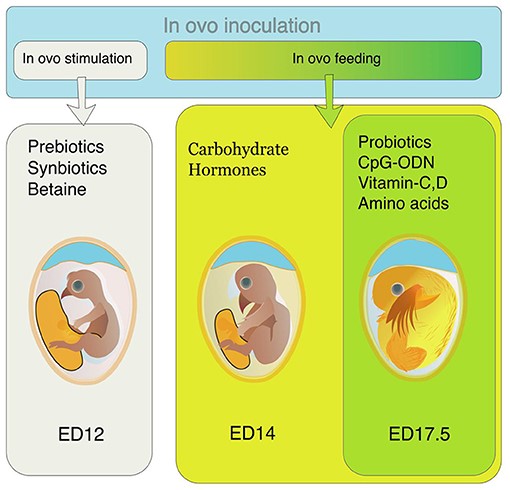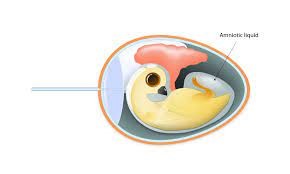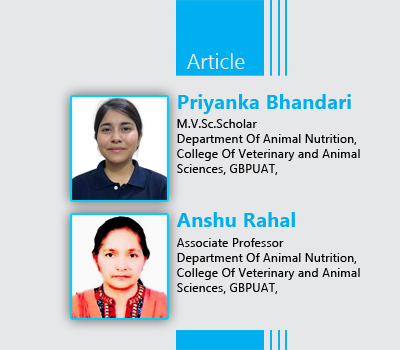
Introduction
In ovo feeding is a very new concept of feeding during the late embryonic stage and early post-hatch stage as it is critical for the enhancement of a functional intestinal tract. Addition of the essential nutrients, when the embryo is in the egg can increase the possibility of an increase in hatching weight, growth performance, and pectoral muscle weight of broiler chickens. The growth and development of the GIT in the initial stages are of critical importance to enhance nutrient utilization in poultry.
During the transportation of the newly hatched chicks, the chicks don’t have water or feed in easy access for about 48–72 h and also they don’t have any training regarding feeding so it is difficult to feed during transportation between hatchery and production farms. The time is taken in providing early nutrition, exposure to the microbes, and the triggering mechanism of stimulation of the immune system of chicks. In ovo feeding can provide early nutrition with a lot of essential nutrients and additives to embryos, also it stimulates gut’s good microflora, and help in mitigating the adverse effects of starvation during all these periods. On the basis of the bird’s transportation or the nutrient supplementation, the nutrient and the additives which is to be given to the embryo is either around day 12 or 17 to 18 of incubation and via air sac or amnion.
In commercial poultry rearing, the newly hatched chick’s health is very important from the point of view of the profit generated from the flock when reach in the market. The general rule in any hatchery is that, at a particular time if more than 95% of chick is hatched then only the chicks are shifted, so it leads to the addition of time to those which has hatched earlier, also added to the time required for hatchery treatments and transport to the rearing farm, that means those chicks may be deprived of feed and water for up to 48–72 h. The yolk which is lasted for this period is mainly comprised of fat and protein as a major source of energy for maintenance and growth. The absence of feed after hatching shows adverse effects those can be retarded growth, weak immune system, weak digestive system, and improper or incomplete organ development.
In ovo Feeding
The nutrient or bioactive compound provided to the chick from different routes i.e. amnion, air sac, amniotic fluid of egg on day 14th to 18th. This type of feeding is called in ovo feeding. These nutrients which are injected into the egg provide nutritional support to the pre-and post-hatch chicks. This feeding provides help to the chick in post-hatch.
Routes and Time of In Ovo Delivery
It is very important and crucial to know the route of administration and the time to inject the nutrient for in ovo feeding as it results in the main output or future success. The in ovo injection of amino acid into the eggs is injected through the yolk sac or extra embryonic cavity. the route through air sac is chosen when the administration is done in the early phase of the incubation and amnion or the amniotic fluid is chosen to deliver the nutrient or additive compound at the late phase of incubation. For administration of is done more efficiently through air sac route as compared to the other methods like spray vent lip or oral gavages methods. A bioluminescent non-pathogenic E. coli DH5α was injected into the embryo through either the air cell region or through the amnion on day 18th to know the visceral load in different visceral organs.

Tools for in ovo Delivery
There are two types of tools required that are manual and automatic. The manual tools have a disadvantage that they are time-consuming and also sometimes limit the scaling up the sample size for research. Whereas the machine or automatic tools can deliver the biological substance in the egg as much faster rates i.e. 12,000 – 70,000 per hour. The machines can do more work with efficiency i.e. dual needle system, automatic needle sanitation, adjustable needle depth, vaccine saving technology, live, embryo detection, candling technology, and viable egg transfer.
Bioactive Compounds Administered Through in Ovo Injection
1. Vitamins- these are essential for the newly born for proper development and proper functioning of metabolic cycles in the body for initiation for energy or protein metabolism. So, vitamin-C i.e. L-ascorbic acid alleviates the stress-related responses when birds go through stress due to the exposure of overheating during the end of the incubation.
2. Amino Acids and Their Metabolites- Heat stress (HS) can lead to the formation of reactive species. The heat stress can cause oxidative stress that may lead to up-regulation of the defense system to adapt the cells against the stress, leading to cell injury, and cell death through apoptosis or through necrosis. The significant role of amino acids like Methionine and cysteine with their metabolites i.e. taurine, polyamines etc. the presence of amino acids is crucial for protein synthesis, immune functions, and oxidative actions.
3. Carbohydrates- carbohydrates are required during late embryogenesis, and generated through the conversion of glucose through glycolysis from the liver reserve of glycogen, through gluconeogenesis from fat, or from protein; initially from amnion albumen, and then from muscle.

4. Pre biotic- these are compounds that induce activities of beneficial microorganisms and these are Carbohydrate-rich fibers (containing oligosaccharides, polysaccharides, etc.) which are fermented in the ceca by microbes and produce short-chain fatty acids (SCFA) along with other metabolites and changing the cecal microbial ecology and promoting the gut health of host animals. The commonly used prebiotics are galactooligosaccharides (GOS), Inulin, mannan, and fructooligosaccharides (FOS), and oligosaccharides (MOS).
5. Probiotics- Probiotics help establish a beneficial gut microbiota that is congenial to the development of gut-associated lymphoid tissues and intestinal integrity.
6. Hormones- These are administered in the broiler embryo on day 18th through the air cell, albumen, or amniotic fluid in quantities like 0.1, 1, or 2 μg.
Conclusion
The advancement in technology opens various gates to changing world. As the field of poultry nutrition is also one of them. The increasing demand and the increasing weight gain in a short period of time lead us to think of new innovations like in ovo feeding. It is a new and indeed a technique, the administration of digestible nutrients in ovo can improve bird quality, increase glycogen reserves, fast development of the total digestive tract, superior skeletal health, better muscle growth rate, and higher body weight gain, improved feed conversion, and enhanced immune function. The prenatal nutrition is a vast field for research as the poultry industry is a very large industry and as human population is increasing day by day it will be huge in the future. So, for that matter, we should be considering this technology and use this in a commercial scale.
Authors:

Priyanka Bhandari¹*, Anshu Rahal2, Mohit Bharadwaj3, Manas Arora4and Shriya Bhatt5
1 M.V.Sc Scholar, 2Associate Professor, and 3 Ph.D. Scholar
Department of Animal Nutrition, College of Veterinary and Animal Sciences, GBPUAT,
Pantnagar, U.S Nagar, Uttarakhand- 263145
















